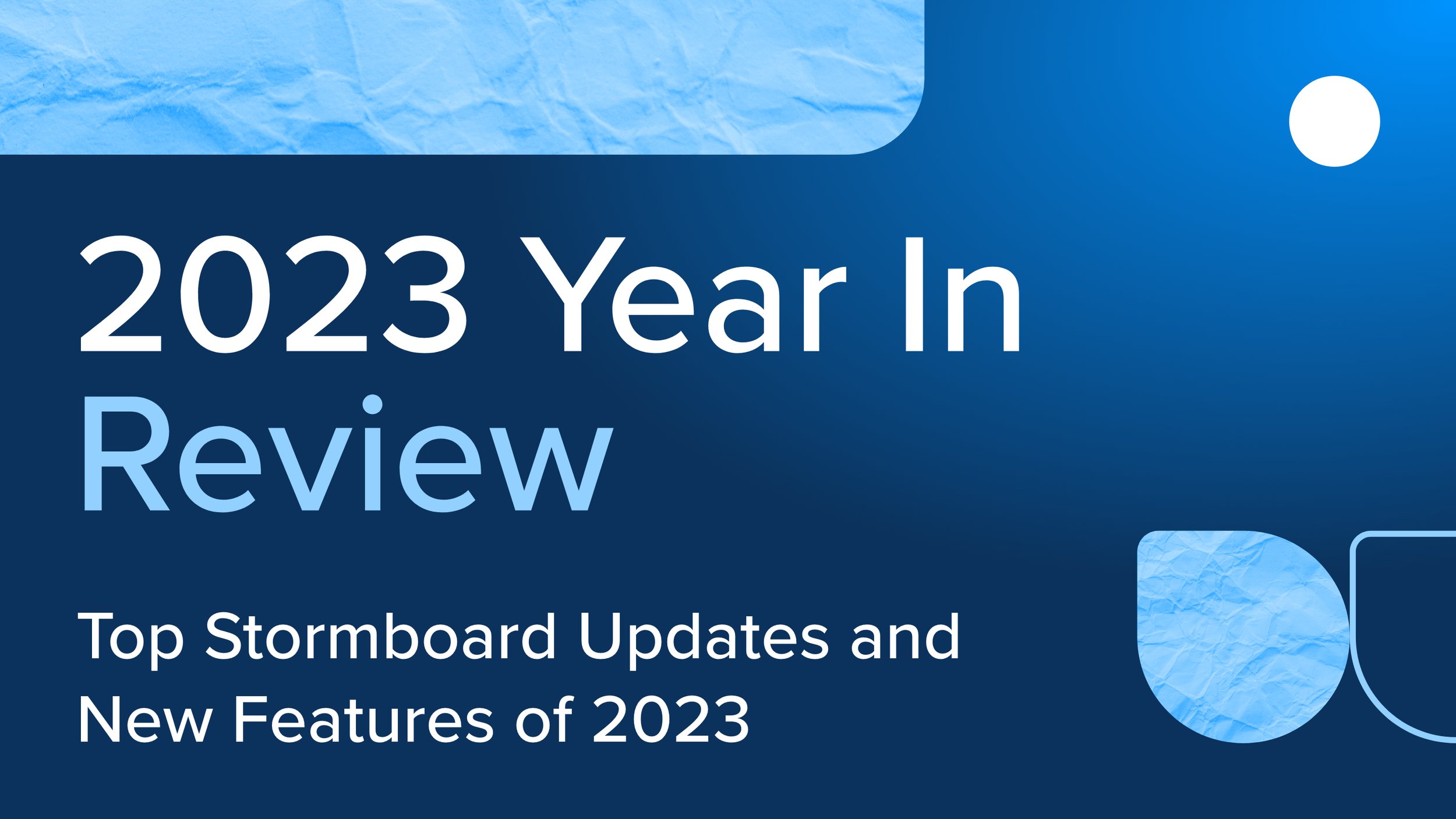Customer Story: How Booker Transportation Manages Remote Collaboration with Stormboard
Denis Cowley is no stranger to pulling his own weight. But it’s more than the weight of his freight that he pulls. As owner and “El Presidente” of his company Booker Transportation (based out of Amarillo, Texas), Denis also knows the importance of collaborating with remote employees.
Booker Transportation has been in business since 1993. Since its early days, Booker has used virtual solutions to manage and communicate with employees working all over the country.
Because of the nature of the business (long-haul driving), Denis and his staff are rarely in the same room together. He and his team found themselves in need of a better way to communicate, collaborate, and share their ideas. With his team operating remotely and being extremely task-driven, Denis knew that it would be challenging to manage these distributed employees.
When Booker Transportation began, there were only a few employees long-hauling local cattle to packing plants in Garden City, Texas. The company also moved refrigerated beef boxes throughout the state. Eventually, Denis decided to move Booker Transportation from Garden City to what would be its namesake, Booker, Texas. Denis moved to Booker without changing the business model of using remote workers.
“Booker was such a small town; it said [Population] ‘1100’ on the sign, but probably, at any given time, there were 600 people there. Even before the Internet got really popular, we had people working virtually.”
Now, Denis oversees a team of around 35 to 40 office employees (not including the owner/operator dispatchers that also work for him). He and his team at Booker discovered Stormboard in 2017 and have been using it ever since. “The learning curve seemed to be on the easier side for people,” says Denis.
The challenge? Finding a tool that works with remote employees
“Because we are a virtual company, we never sit in the same office together. So, we’ve got certain people (that we consider our creative team) that are scattered far and wide. By the time you do a conference phone call or a video conference call, you’re just burning up time,” says Denis.
The problems that Denis faced with his distributed team are common. Getting everyone together for a traditional meeting is difficult. The time and energy of the people in the meeting are often wasted on irrelevant topics.
The solution? Stormboard
For Denis, the solution was Stormboard. He could manage remote collaboration with Stormboard and with his team.
“I found Stormboard attractive [because] we could collaborate and share ideas. It was an easy format where people didn’t have to learn a lot of tips and tricks to make it work. So, that’s why we chose Stormboard.”
Because Denis and his team work in different locations, it’s also difficult for him to meet potential new hires in person. “We just did a [Stormboard] session about interview questions [to ask during] video employee interviews (because we don’t have an office for people to come see us),” explains Denis, “and the communication, the collaborative communication, was excellent.”
“It’s always going to be our problem-solving tool of choice”
Next? Getting the whole team working the same way
As a team leader and business owner, Denis knows that getting employees to adopt new technology and tools in the workplace can be difficult. And so is finding time to train them if the tool is complicated. “[If your office collaboration tool] takes six months to train your employees [on], you’re [already] behind.”
It didn’t take long for Denis and his remote team to learn how to use Stormboard and begin working. “Stormboard takes very little [upfront] training — it’s sticky notes that you can move around,” says Denis, explaining that advanced functions can be learned as you go. “You can learn some of the other nuances of it the deeper you get.”
“It’s always going to be our problem-solving tool of choice,” Denis says, “whether we go into a full Six (6) Thinking Hat session or we just set up three columns and throw ideas out there. Everyone that enters the Storm is trained in the de Bono Six Hat method, and we use the Six (6) Thinking Hat method the most.”
The template Denis uses comes from a collaborative approach created by the father of lateral thinking, Edward de Bono. This process helps people look at their decision-making or product-planning process from many different perspectives.
In Stormboard’s Six (6) Thinking Hat template, the six color-coded sections represent different directions.
White represents “Information”, where current and available facts are listed.
Red represents “Emotions”, used for intuitive or instinctive gut reactions, or statements of emotion.
Black represents “Discernment”, which uses logic to identify reasons to be cautious and conservative.
Yellow represents the “Optimistic Response”, where you identify the benefits and values of a decision.
Green represents “Creativity”, which provokes thought and investigation.
Blue represents “Overview”, which is for drawing conclusions.
These different sections, or “hats”, challenge different parts of the brain. Team members think and collaborate in these six different ways. They can switch their focus to each section as needed. The Six (6) Thinking Hats template enhances the way teams think and collaborate, something that Denis and his team appreciate.
Collaboration without borders
“It’s a good collaborative tool for a virtual company like mine… when we want to get our creative heads together and we can’t do it in the same room. Sometimes your creativity comes at the strangest times,” muses Denis.
That’s what I tell all my people — it may not come to you while we’re sitting there having a video conference. That’s what’s so good about Stormboard – your Storm can sit there inactive, silent, for a week, and then somebody has an idea they can go in there and plug it in and, boom!”
Throughout the years, Denis has worked hard to make Booker efficient, productive, and collaborative. His remote team continuously uses Stormboard to organize thoughts, collaborate, and, most importantly, problem-solve.
“[Stormboard] is always going to be our problem-solving tool of choice.”
Get Started!
Are you interested in learning more about how Stormboard can work for you and your team? Click here to sign up for a FREE trial or book a demo!









